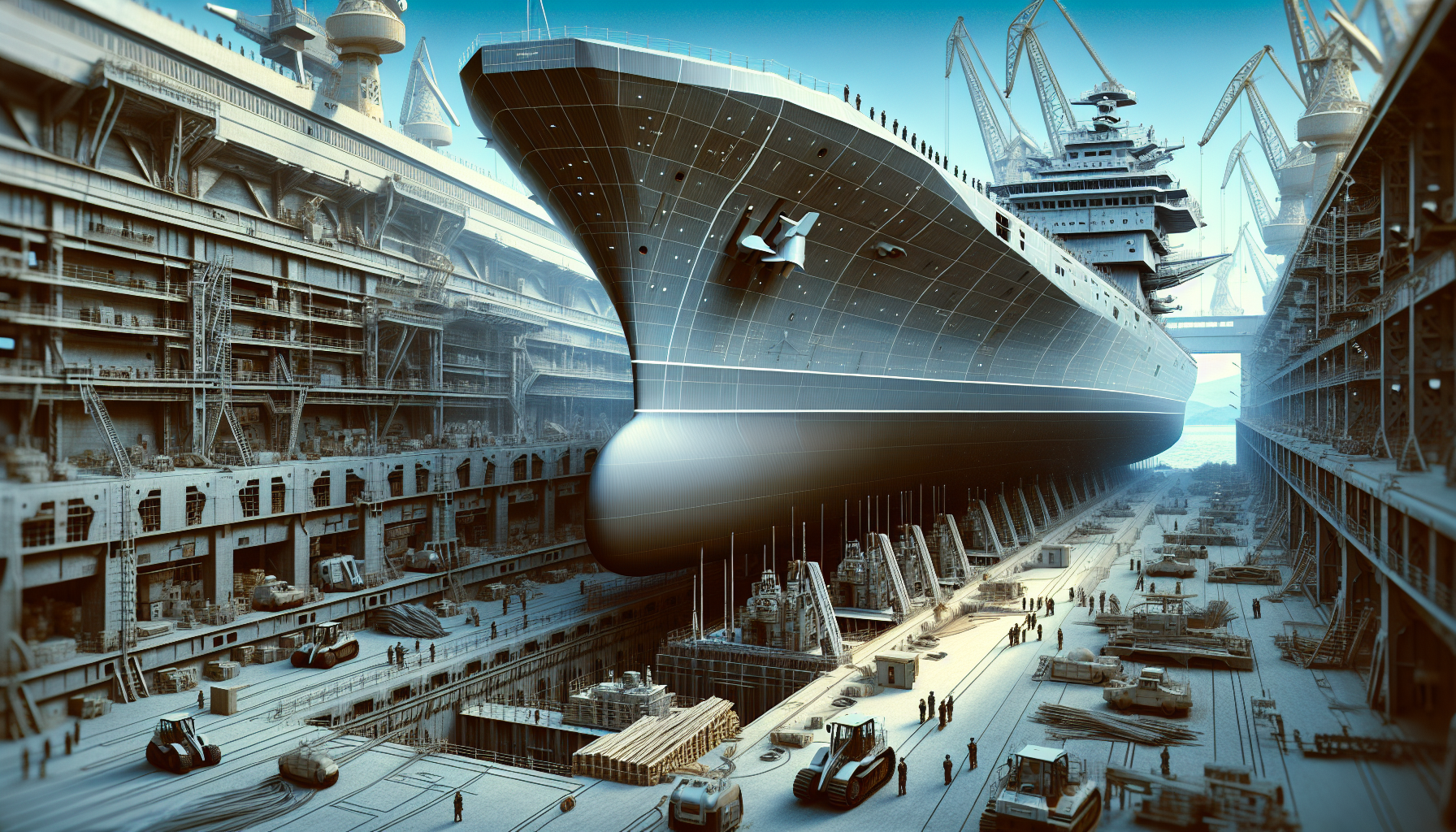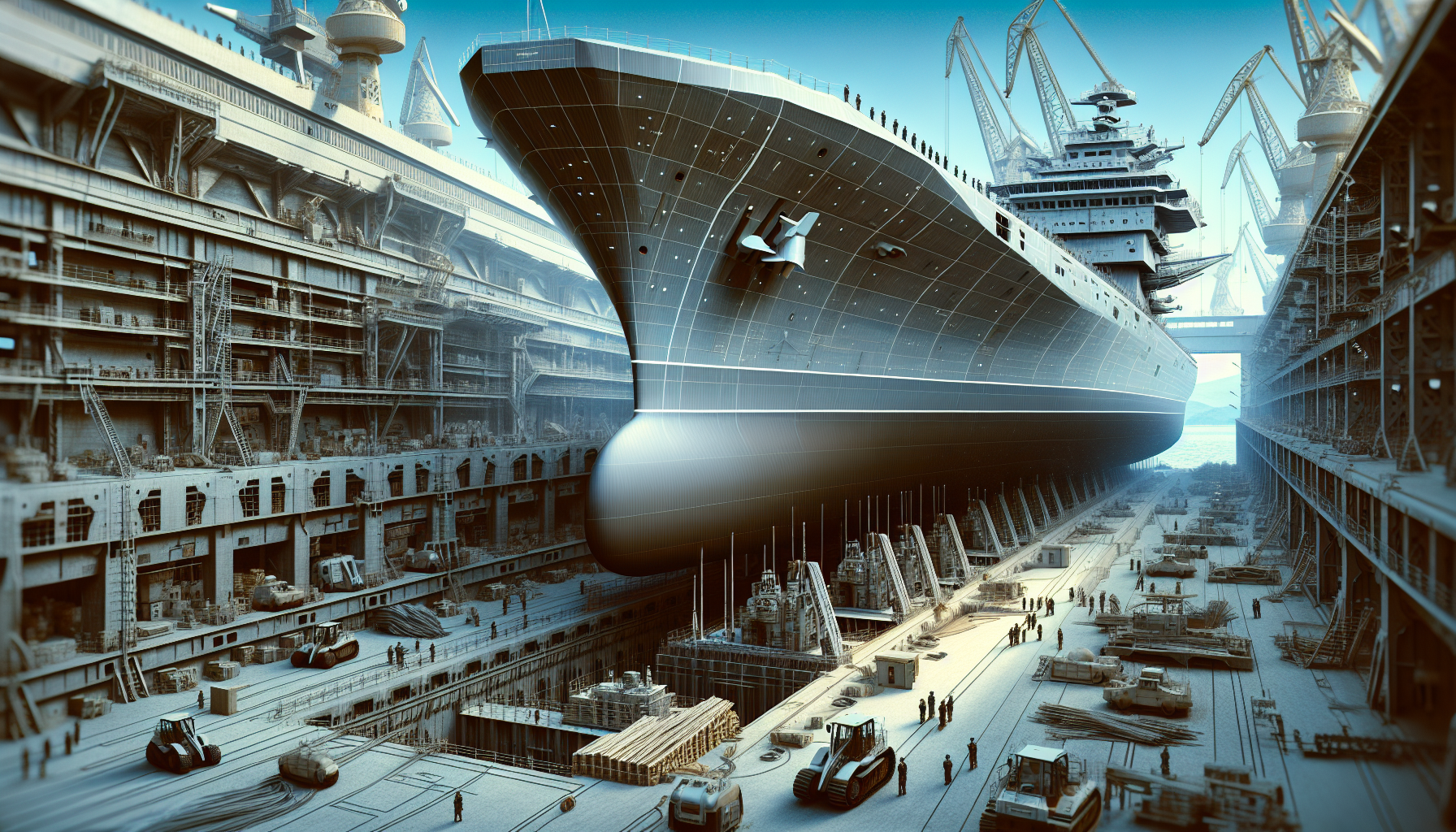The Navy’s ambitious fiscal year 2026 budget reflects a significant push towards enhancing naval capabilities, as it calls for the procurement of 19 new ships, a notable increase compared to recent years. This assertive request highlights the urgency military leaders feel regarding current maritime readiness. However, a critical challenge looms large: the inability to fulfill existing shipbuilding contracts that are already behind schedule and increasingly costly.
In examining this situation, the article will explore various aspects of the Navy’s shipbuilding strategy, including the financial implications, the state of key programs like the Virginia and Columbia class submarines, and the broader objectives of reaching a formidable 350-ship fleet. Attention will also be directed towards the factors affecting Navy recruitment and the potential role of drone ships in shaping future naval operations. Through this analysis, a clearer understanding of whether the Navy can realize its ambitious shipbuilding goals will emerge.
Overview of the Navy’s Shipbuilding Request
Significance of the 2026 Budget Request
You should recognize that the Navy’s request for 19 new ships in its fiscal year 2026 budget represents a pivotal moment in defense procurement. This figure marks a substantial escalation compared to previous years and reflects a strategic recalibration aimed at addressing perceived gaps in maritime readiness. This budget request is not merely an exercise in resource allocation; it underscores the urgency and gravity of enhancing naval capabilities in response to evolving global threats.
Comparison with Previous Years
In comparing this budget request with earlier submissions, you will find that the Navy has historically requested fewer ships, indicating a potential shift in priorities or an admission of strategic vulnerability. Notably, the requests in prior years often hovered around a smaller number, typically citing budgetary constraints and prioritization of modernization over expansion. This new stance signals a clear pivot, suggesting an acknowledgment that numerical superiority—while not the sole metric of naval strength—is increasingly necessary in a multipolar world.
Strategic Implications of Increased Ship Orders
The order for 19 ships has significant strategic implications. By increasing the naval fleet, you are not only enhancing deterrence capabilities but also improving operational flexibility. This leap forward might serve to bolster allies’ confidence and could alter the balance of power in regions where maritime dominance is contested. However, it is crucial to assess whether the Navy can indeed translate this ambitious request into reality, given the logistical and managerial challenges that lie ahead.
The Numbers Behind the Request
Details of the 19 Ships Requested
You must delve into the specifics of the types of ships included in this budget request. The breakdown indicates a diverse fleet composition, including some advanced combat ships and support vessels. These ships are not merely enhancements to an existing fleet; they represent a new paradigm in naval warfare, potentially designed for integration with emerging technologies such as drones and unmanned vehicles.
Breakdown by Ship Class
When examining the request more closely, you will discover that the order spans various classes of ships, including destroyers and amphibious transport docks. Each class has been designed with specific operational objectives in mind, reflecting the Navy’s strategic priorities. The challenge here is not just to procure these ships, but also to ensure they meet evolving operational requirements and integrate seamlessly within the existing fleet structure.
Projected Costs and Funding Allocations
You should be aware that while the quantity of requested vessels is significant, the projected costs associated with this request are equally noteworthy. Funding allocations remain crucial in determining the feasibility of the construction process. Additionally, the financial outlay requires meticulous planning to avoid the pitfalls of budget overruns that have plagued historical shipbuilding programs.

Historical Context of Navy Shipbuilding
Past Shipbuilding Requests and Achievements
Understanding the historical context of Navy shipbuilding requests provides necessary insight into current challenges. Past achievements included notable expansions in fleet size and capabilities, often characterized by technological advancements and increased operational effectiveness. However, these triumphs came with mounting challenges and delays that have cast a shadow over the Navy’s ambitious goals.
Challenges Faced in Previous Shipbuilding Programs
Historically, shipbuilding programs have encountered numerous obstacles, such as technological hurdles, supply chain disruptions, and rising costs. As you analyze past programs, it becomes evident that these challenges have periodic repercussions, contributing to timeline extensions and diminished cost-effectiveness. Learning from these difficulties is crucial to inform future strategies effectively.
Lessons Learned from Historical Delays
You should consider the lessons learned from these historical delays. Effective project management, robust oversight, and sufficient funding are essential components that can mitigate the risks of embarking on ambitious shipbuilding endeavors. Thus, you are encouraged to assess whether contemporary practices are being aligned accordingly.
Current State of Shipbuilding Programs
Assessment of Virginia-Class and Columbia-Class Submarines
Currently, you might evaluate the status of key submarine programs such as the Virginia-Class and Columbia-Class. Both programs are critical components of the Navy’s strategic vision. However, they are beset by delays, necessitating a candid assessment of the operational implications. The potential for technological advancements within these classes is significant, yet the overrunning schedules threaten their intended contributions to naval readiness.
Status of Other Key Shipbuilding Projects
Beyond submarines, you should consider the ongoing status of other key shipbuilding projects. Programs spanning surface combatants and logistical vessels face their own challenges amid a scarcity of skilled labor and unforeseen supply chain disruptions. Each program’s progress provides a snapshot of broader systemic issues within the Navy’s shipbuilding capabilities.
Recent Performance Metrics of Shipyards
You can derive insight from recent performance metrics from various shipyards engaged in construction for the Navy. These indicators often highlight performance variability, impacting timelines and efficiency. Performance assessment must be grounded in realistic expectations, as labor shortages and technological stagnation within the industry heavily influence outcomes.

Challenges in Meeting Shipbuilding Demands
Workforce and Skilled Labor Shortages
A pervasive challenge facing the Navy’s shipbuilding efforts is the shortage of skilled labor. You might recognize that a robust workforce is essential for efficient production cycles. As traditional shipbuilding expertise wanes with retiring generational skills, there is an urgent need for comprehensive training programs to equip a new generation of shipbuilders capable of meeting modern demands.
Supply Chain Disruptions
The global supply chain has become increasingly fragile, complicating the logistics of procuring materials essential for ship construction. You should consider how delays in material delivery contribute to project timelines elongating, ultimately impeding the Navy’s aspiration to convert increased funding into tangible maritime strength.
Technological Hurdles in Modern Ship Design
Modern ship design comes with its own set of technological hurdles. You should explore how the push for innovation—including the integration of cutting-edge technologies such as artificial intelligence and unmanned systems—creates complexity in both design and manufacturing processes. Balancing these advancements while maintaining efficiency requires astute management and foresight.
Navy’s Strategic Goals for Fleet Size
The Goal of a 350-Ship Navy
The Navy has articulated a strategic aspiration for a 350-ship fleet, a target that symbolizes both capability and deterrence. Your evaluation might focus on the belief that a larger fleet enhances the Navy’s ability to project power and fulfill global commitments. This goal reflects a recognition of the changing maritime theater and the necessity of adaptability in fleet composition.
Benefits of Expanding Fleet Size
An expanded fleet can provide numerous benefits, including increased operational flexibility and enhanced deterrence. The ability to allocate ships across various theaters allows for a more nuanced response to international crises. Additionally, the expansion can support allied operations, reinforcing coalitions in maintaining global maritime security.
Risks Associated with Delayed Shipbuilding
However, you must also critically assess the risks associated with delayed shipbuilding. Each postponed delivery diminishes the Navy’s operational readiness, potentially eroding strategic advantages. The delays can also translate into prolonged reliance on existing, aging ships, which may not possess the advanced capabilities required for contemporary naval warfare.

Implications of Increased Funding
Impact on Shipyard Workflows
Increased funding is anticipated to have a significant impact on shipyard workflows. You should analyze how financial incentives could optimize construction schedules, allowing for better planning and resource allocation. However, without meticulous oversight, increased funding may not translate into timely, effective deliveries.
Potential for Boosting Local Economies
The shipbuilding industry holds the potential to invigorate local economies, drawing in ancillary industries and providing jobs. You might explore how investments in ship construction can ripple through local communities, offering employment and skill development while fostering a sense of national contribution.
Accountability and Oversight in Spending
Nevertheless, you should exercise caution in ensuring accountability and oversight in the management of increased funding. The specter of misallocation looms large, and you must advocate for stringent oversight mechanisms to ensure that investments yield tangible results. The interplay between funding and effective management is crucial to achieving desired outcomes.
Recruitment and Retention in the Navy
Current Struggles with Navy Recruitment
Recruitment remains a contentious challenge for the Navy as it seeks to fill critical roles within its expanding fleet. You may delve into the backdrop of recruiting struggles, considering societal shifts and perceptions of military service. The Navy faces an uphill battle in attracting talent, especially in an era of changing workforce dynamics and competitive job markets.
Impact of Shipbuilding Programs on Recruitment Efforts
The relationship between shipbuilding and recruitment efforts is complex. On one hand, an expanding fleet could enhance recruitment appeal by offering more career opportunities. Conversely, delays in ship construction may deter potential recruits concerned about job security and long-term engagement. Your exploration of this dynamic may provide crucial insights into improving recruitment strategies.
Strategies to Attract and Retain Talent
You should consider effective strategies that the Navy could employ to enhance recruitment and retention. Programs aimed at skill development, along with marketing initiatives to reshape public perceptions of military service, could yield positive outcomes. Additionally, the incorporation of technology and innovative job roles may serve to attract a new generation of talent seeking meaningful careers.
The Role of Technology in Future Shipbuilding
Introduction of Drone Ships and Unmanned Vessels
The introduction of drone ships and unmanned vessels reflects a critical evolution in naval operations. As you examine this shift, it becomes evident that these technologies can rewire traditional operational paradigms, enabling new strategies of warfare while simultaneously addressing some labor shortages in ship operations.
Innovation in Ship Design and Construction
Technological innovation in ship design and construction has far-reaching implications for naval capabilities. You may reflect on developments in materials, propulsion systems, and stealth technologies, each contributing to more efficient and effective ships. Staying abreast of these advancements is essential for maintaining maritime superiority in a rapidly evolving domain.
Investment in Research and Development
Investment in research and development is a cornerstone of shaping the future of naval shipbuilding. You should advocate for sustained investment in R&D initiatives, which will equip the Navy with technology that transgresses conventional boundaries. The capacity for innovation will dictate the Navy’s ability to adapt and excel in future challenges.
Conclusion
Summary of Key Points
In summary, you have examined the Navy’s request for an increased shipbuilding budget in fiscal year 2026, its implications for fleet expansion, and the myriad challenges that exist. From workforce shortages to the impact of technological innovation, understanding these dynamics is paramount for fostering robust maritime capabilities.
Final Thoughts on the Navy’s Shipbuilding Future
The Navy’s shipbuilding future hinges on the successful navigation of these current challenges. As you contemplate the future, recognizing the interdependencies between strategic goals, funding, and execution will be crucial. The path forward should integrate lessons from history with aspirations for a fortified fleet.
Call for Continued Discussion and Analysis
Ultimately, continued discussion and analysis around shipbuilding remain vital. Encouraging dialogue among stakeholders, including industry professionals and military leadership, can yield informed strategies that align naval aspirations with achievable objectives. As you engage in these critical conversations, you play a role in shaping the future of the Navy’s shipbuilding endeavors.
